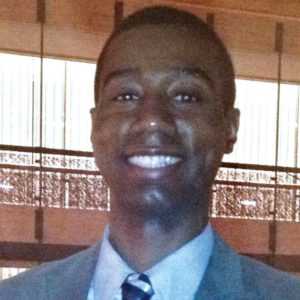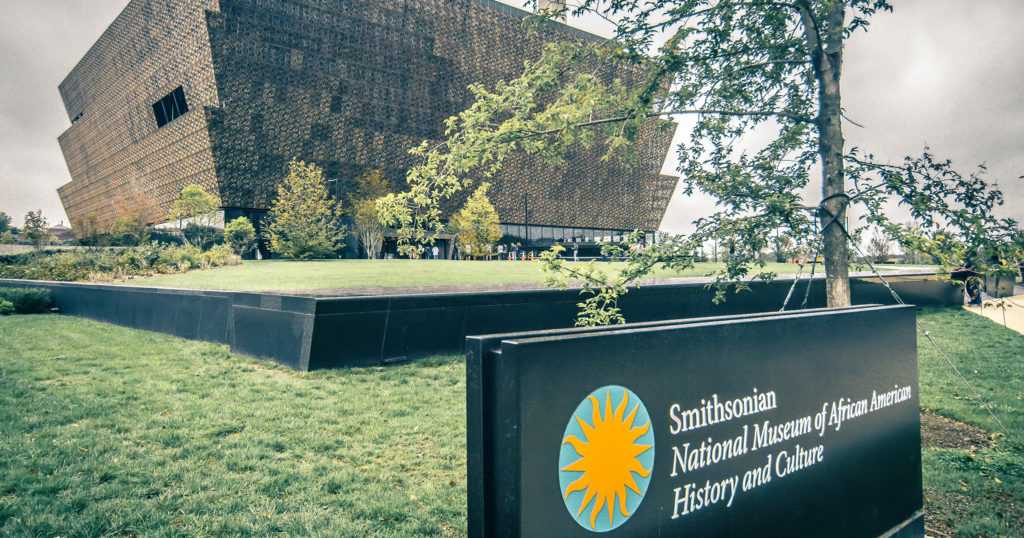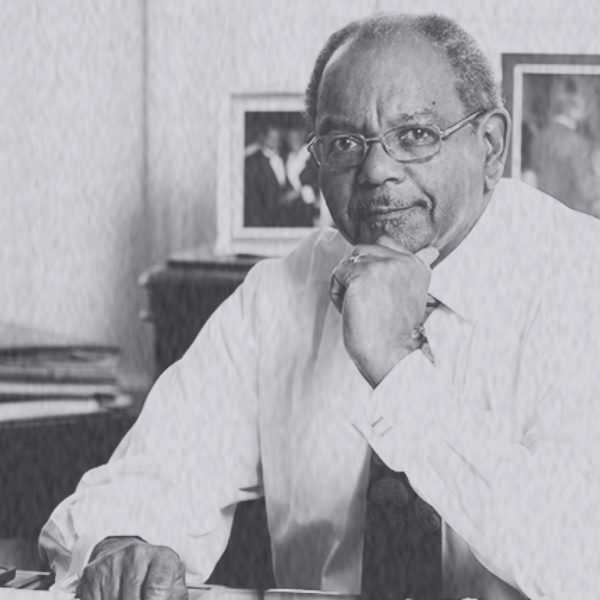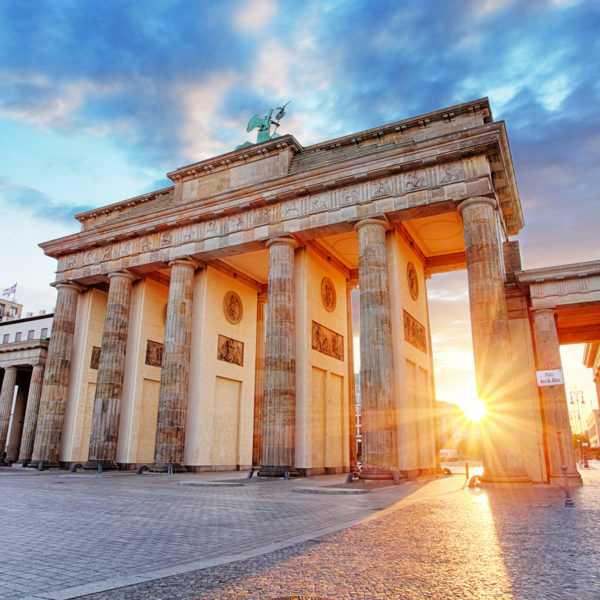Small Donors Build a Big Legacy for the African American History Museum


When the National Museum of African American History and Culture opened on Sept. 24, 2016, much of the news focused on corporations, executives and celebrities donating millions of dollars to the newest addition to the Smithsonian in Washington, D.C. What went much less widely reported at the time and in the years following is how small donations of money, artifacts, and information from average people also has played a crucial role in building the legacy of the NMAAHC.


The physical building of the museum itself and its collection of over 36,000 artifacts strive to reflect the evolving legacy of African Americans throughout the life of the nation. That is why all visitors must begin by taking an elevator to descend into the museum’s lower level. There, they walk through dim lighting to see exhibits on the era of the transatlantic slave trade. As visitors progress through the upper levels of the museum, they see exhibits on the Antebellum period, the Civil War, Reconstruction, Jim Crow, the Civil Rights era, and modern times. As they travel upward, visitors also encounter ever brighter lighting.
DIVERSE SOURCE OF FUNDS
To be sure, the museum would not have been able to raise $265 million in private donations prior to opening without huge contributions. These include at least $20 million from the Oprah Winfrey Charitable Foundation, at least $5 million from companies including Walmart and Boeing, as well as at least $1 million each from approximately 100 other sources such as the Alfred Street Baptist Church of Alexandria, Virginia. And each year the museum receives federal funding of more than $30 million.
From Jan 1, 2003, to Dec. 31, 2020, the NMAAHC raised approximately $534 million, according to the museum’s Advancement Team. Individuals contributed 40% of the donations, followed by corporations at 35%, then foundations at 22%, and 3% from other groups. The Smithsonian calculates fundraising results on a fiscal year of Oct. 1 to Sept. 30. Museum revenue increased by approximately 71% year-on-year for fiscal 2020. This was primarily due to the response to social-justice issues that developed during that time period, as well as to more corporate support and membership, according to museum officials.
These donations are essential, since admission to the museum is free. (As a result of the COVID-19 pandemic, in-person visits have been replaced with virtual tours for much of the past year.) The NMAAHC owes a substantial portion of its continued success to regular Americans. Millions of individuals have given the museum anything from a single dollar to a single photograph during the past 17 years. A Dec. 16, 2003, Act of Congress officially approved its federal development.
While many supporters are Black, the museum’s small donors represent various races and ethnicities. Along with visitors, they have enabled the NMAAHC to thrive. Last year, despite the pandemic, the museum had nearly 368,000 in-person visits, making it the second most popular museum at the Smithsonian. By comparison, from 2017 to 2019 the museum averaged 2 million annual visits. More than 200,000 people have become members by paying an annual fee that starts at $25 as a “Supporter” and tops out at $5,000 as a “Director’s Circle Champion.”
Yet perhaps the best way to demonstrate the very personal connection that everyday people have with the museum is to share some very personal stories. Here are the experiences of four people who have donated to the NMAAHC in different ways, and who plan to further their connection to the museum in the future.
VISITING SINCE THE START
Faye M. Anderson is director of All That Philly Jazz, a community project that combines online content and live events to document the history of jazz in Philadelphia. She visited the NMAAHC grounds during its inaugural weekend. Lacking a ticket for entry, Anderson went to the Freedom Sounds community celebration event honoring the museum’s opening, which featured storytelling, interactive workshops, concerts, and a social media tent. A week later, she entered the museum for the first time. Her most recent visit was in 2019.
“Even though I could get no closer than the ‘No Trespassing” sign, I would stop by the museum while it was under construction. I’ve lost count of how many times I have visited the NMAAHC,” says Anderson, a Philadelphia local who is an NMAAHC member. “For the first two years, it was my home away from home. I set a monthly reminder to reserve timed-entry passes. I plan to return as soon as it’s safe to do so without wearing a face mask and social distancing.”
When visiting the museum, Anderson typically devoted her time to one floor per trip before stopping at Contemplative Court on the concourse level. There, under the skylight and beside the cylindrical fountain raining down into the center of the room, she says, she would think about the African-American connection to survival, faith, resistance, and resilience over the past four centuries. “While at times emotionally wrenching, the NMAAHC is a loving tribute to the ancestors who made a way out of no way. It is sheer joy to experience Black excellence in all its glory: music, sports, fashion, dance, culinary and visual arts, performing arts, and activism.”
EDUCATING AN EDUCATOR
Diocelina Van Belle, assistant principal at Kordyak Elementary in Fontana, California, donated to the NMAAHC earlier this year in order to become a member. However, due to the pandemic, she has only taken a virtual tour of the museum and has never visited in person. She wants to do so when COVID-19 is under control, and make additional donations in the future. Van Belle also hopes her Rialto Unified School District can encourage other administrators to become museum members, and have the district match their donations.
Through her job, she has been participating with the district’s African American Equity Action Team and its African American Parent Advisory Council. The district’s student population is largely Latino, and also has a significant number of Black children. Van Belle expresses deep concern about the contemporary racial justice and social issues that some of those Black students have discussed with her. That motivated her to start learning more about African-American history, and ultimately to gain NMAAHC membership.
“As an elementary administrator and mother, I feel the need to be a participant of transformative change for the betterment of our nation,” says Van Belle, a native of Mexico who came to the U.S. as a young child. “The museum is a medium that promotes a direct avenue for honest dialogue to create change. It is important that we garner more support for the museum, so that others will see the significance and learn from all that it has to offer.”
CURATING IN COLLABORATION
Zaheer Ali is a Harvard University and Columbia University educated historian who serves as the history editor at Sapelo Square, an online publication dedicated to the history, culture, and political life of Black Muslims in America. He currently lives in the Washington, D.C., metro area of Maryland. For Black History Month, Sapelo Square has featured NMAAHC works on Muslims of African descent, which museum officials curated for Sapelo’s website in coordination with Ali.
In 2012, he presented to teachers on Malcolm X for an event organized by project leaders developing the museum. As a result of donating his expertise, museum officials invited him to attend its soft opening in September 2016, with financial donors and others who had contributed to the NMAAHC in various ways. The magnitude of the collections stunned him. A little panel on the lowest floor, of an enslaved African Muslim, stood out to him. He also noted displays of other African Muslim and African-American Muslim people, artifacts, and community initiatives.
“I was pleasantly surprised and affirmed to see that,” Ali says. “Then I thought it would be cool to have a curated theme. That day, I started taking pictures of everything that I thought could tell that story. While I was doing that, I saw an elderly woman showing some younger relatives there with her that some of her own items — related to the Nation of Islam — were on display at the museum. And I wanted to cry.”
RAISING YOUNG CHILDREN
Maryann James-Daley, Director at the Martin Luther King Jr. Memorial Library in Washington, D.C., has donated to the NMAAHC during her two visits. “I went within the first four months of the NMAAHC’s 2016 opening, with my husband, our 1½ year-old son, and a couple friends,” she says. James-Daley went again in early 2020, with her husband, their son, and their two-year-old daughter, and a different pair of friends.
“The first time I went was really emotional for me, and a lot of other people there. When we went last year, my five-year-old son was asking me questions about the Black experience and about slavery,” James-Daley says. “I need to visit the museum again, by myself at some point, and go to Emmett Till’s casket. And when my daughter is older I want to take her again so I can hear what she has to say about it. The museum is a good way to have a full conversation of the whole Black experience with your kids.”
Her place of work also is linked to African-American history. Alternatively known as the Central Library, it is the flagship of D.C.’s 25 neighborhood libraries. The building, which contains a large mural of Dr. Martin Luther King, houses the Black Studies Collection of more than 15,000 books on the Black experience in the U.S. and the African diaspora. It opened in 1972, was listed in the National Register of Historic Places in 2007, and recently completed a $211 million rehabilitation. The library also has copies of the children’s book How to Build a Museum, by Tonya Bolden, about the NMAAHC.
CONTINUALLY ADAPTING
Museum officials have been continually adapting to the national upheaval wrought by the pandemic and racial justice issues that have gained renewed urgency in the last few years. With the building closed to prevent infections, the NMAAHC has launched numerous virtual offerings. Anyone can now view its exhibitions online, explore and reuse thousands of digital items from its collections without having to make requests to the Smithsonian, watch videos of museum programs, and more.
In September, the museum published the web-based commentary, Athletes for Social Change, in response to deadly police actions involving Black people. New programs include “A Seat At The Table: Prison Reform And Restorative Justice”; “Economically Speaking: The Economic Impact of COVID-19 On The African American Community”; and “Courthouse Research: Using Probate Records To Research Enslaved Ancestors”.

